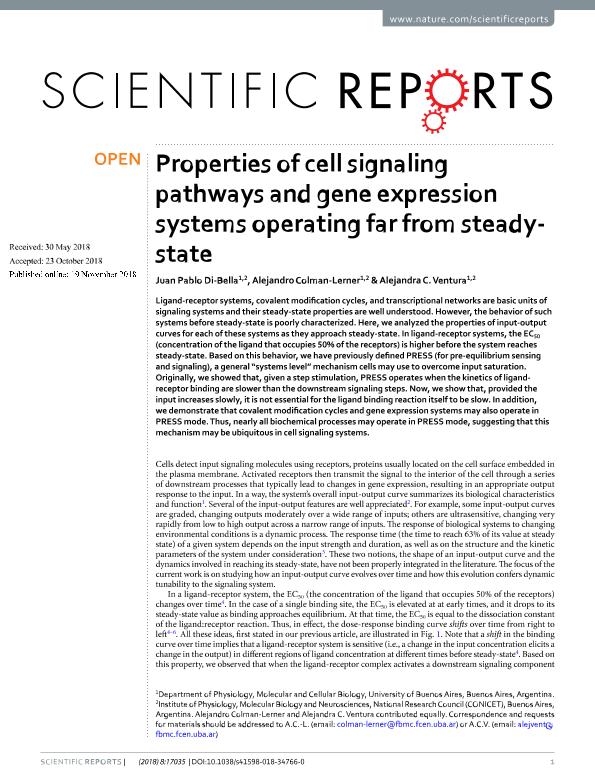Artículo
Properties of cell signaling pathways and gene expression systems operating far from steady-state
Fecha de publicación:
12/2018
Editorial:
Nature Publishing Group
Revista:
Scientific Reports
ISSN:
2045-2322
Idioma:
Inglés
Tipo de recurso:
Artículo publicado
Clasificación temática:
Resumen
Ligand-receptor systems, covalent modification cycles, and transcriptional networks are basic units of signaling systems and their steady-state properties are well understood. However, the behavior of such systems before steady-state is poorly characterized. Here, we analyzed the properties of input-output curves for each of these systems as they approach steady-state. In ligand-receptor systems, the EC50 (concentration of the ligand that occupies 50% of the receptors) is higher before the system reaches steady-state. Based on this behavior, we have previously defined PRESS (for pre-equilibrium sensing and signaling), a general “systems level” mechanism cells may use to overcome input saturation. Originally, we showed that, given a step stimulation, PRESS operates when the kinetics of ligand-receptor binding are slower than the downstream signaling steps. Now, we show that, provided the input increases slowly, it is not essential for the ligand binding reaction itself to be slow. In addition, we demonstrate that covalent modification cycles and gene expression systems may also operate in PRESS mode. Thus, nearly all biochemical processes may operate in PRESS mode, suggesting that this mechanism may be ubiquitous in cell signaling systems.
Palabras clave:
Signal transduction
,
Dose-response
,
pre-steady state
,
mathematical modeling
Archivos asociados
Licencia
Identificadores
Colecciones
Articulos(IFIBYNE)
Articulos de INST.DE FISIOL., BIOL.MOLECULAR Y NEUROCIENCIAS
Articulos de INST.DE FISIOL., BIOL.MOLECULAR Y NEUROCIENCIAS
Citación
Di Bella, Juan Pablo; Colman Lerner, Alejandro Ariel; Ventura, Alejandra; Properties of cell signaling pathways and gene expression systems operating far from steady-state; Nature Publishing Group; Scientific Reports; 8; 1; 12-2018; 1-14
Compartir
Altmétricas




